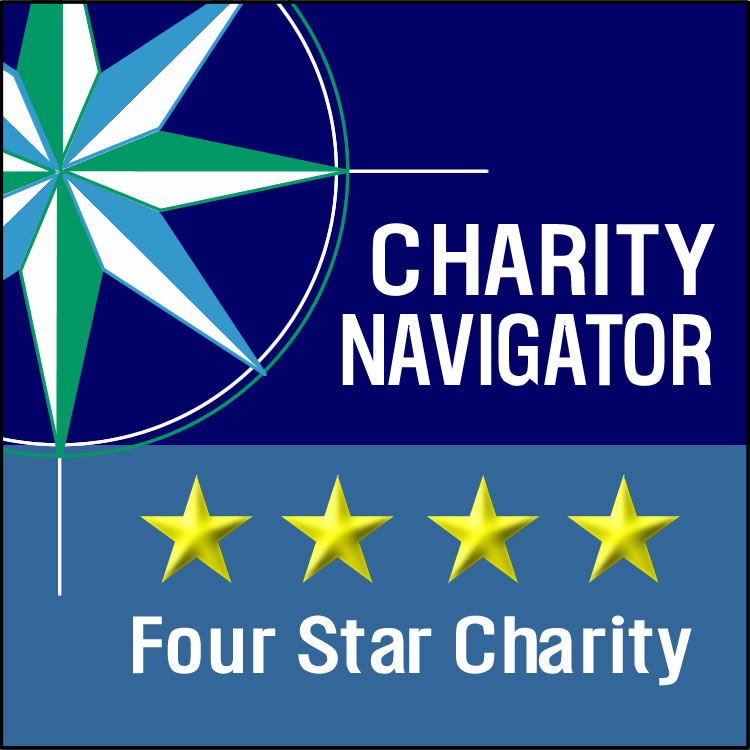Blind Bride Blindfolds Wedding Guests
 Lucy Edwards has been blind since age 17. Wanting her wedding guests to experience what it was like to "walk in Lucy's shoes" and experience her special day the way she was experiencing it, Lucy and her now husband Ollie Cave opted to put blindfolds on all of their wedding guests.
Lucy Edwards has been blind since age 17. Wanting her wedding guests to experience what it was like to "walk in Lucy's shoes" and experience her special day the way she was experiencing it, Lucy and her now husband Ollie Cave opted to put blindfolds on all of their wedding guests.The result was not a dry eye in the house -- though it might have been a bit hard to detect the tears behind all of the blindfolds. Lucy and Ollie even shared their planning and execution of this novel approach on the Good Morning Britain TV show.
I lost my sight at 17 years old and I blindfolded my wedding guests so they could experience the day like I did - they all had goosebumps
San Diego Center For The Blind appreciates your support

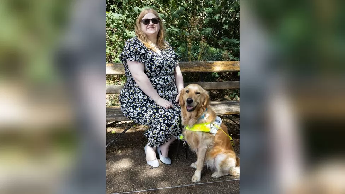 Dr. Amy Kavanagh, 34, a historian who happens to be blind, tried to take her baby to West Middlesex University Hospital. However, a security guard "kept shouting 'no dogs' at me and my partner", since Kavanagh had a guide dog named Ava. Other patients and staff attempted to intervene.
Dr. Amy Kavanagh, 34, a historian who happens to be blind, tried to take her baby to West Middlesex University Hospital. However, a security guard "kept shouting 'no dogs' at me and my partner", since Kavanagh had a guide dog named Ava. Other patients and staff attempted to intervene.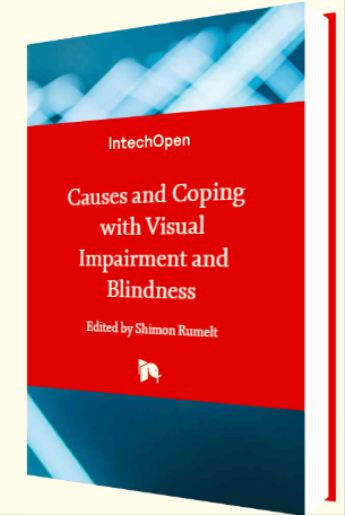 You or your loved one have recently suffered significant vision loss, perhaps with further loss predicted. How do you cope?
You or your loved one have recently suffered significant vision loss, perhaps with further loss predicted. How do you cope? Even as Israel has fought Hamas in the last few days, it has already achieved remarkable success in fighting various causes of blindness. Israel has taken measures to reduce age-related macular degeneration (AMD), glaucoma, optic atrophy, and cataract. These measures have proven successful, as indicated by the rate of blindness decreasing 25% from 2009 to 2020.
Even as Israel has fought Hamas in the last few days, it has already achieved remarkable success in fighting various causes of blindness. Israel has taken measures to reduce age-related macular degeneration (AMD), glaucoma, optic atrophy, and cataract. These measures have proven successful, as indicated by the rate of blindness decreasing 25% from 2009 to 2020.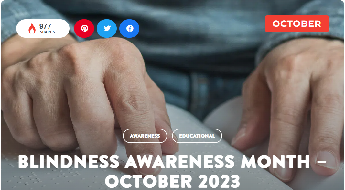 October 2023 is Blindness Awareness Month. According to the WHO, 2.2 billion people worldwide have blindness or some sort of visual impairment. Interestingly, 1 billion of those either could have been prevented or have not yet been treated.
October 2023 is Blindness Awareness Month. According to the WHO, 2.2 billion people worldwide have blindness or some sort of visual impairment. Interestingly, 1 billion of those either could have been prevented or have not yet been treated.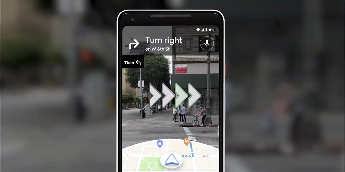 People who are blind or visually impaired now have an array of incredible apps, wearable devices, headsets, canes, and other technologies to help them "see", read, navigate, identify objects, find objects, get alerted to obstacles and danger, and much more.
People who are blind or visually impaired now have an array of incredible apps, wearable devices, headsets, canes, and other technologies to help them "see", read, navigate, identify objects, find objects, get alerted to obstacles and danger, and much more.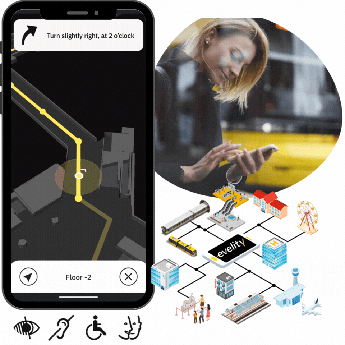 Evelity is a fantastic app enabling folks who have a visual impairment to find their way around in indoor, complex venues like museums, malls, and universities. The app functions similarly to GPS.
Evelity is a fantastic app enabling folks who have a visual impairment to find their way around in indoor, complex venues like museums, malls, and universities. The app functions similarly to GPS.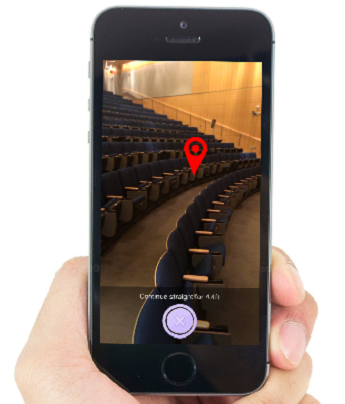 Clew is an outstanding free app for blind and visually impaired people, enabling them to retrace their path and return to any location. Users can choose to return to a location via voice directions, sound effects, or haptic feedback.
Clew is an outstanding free app for blind and visually impaired people, enabling them to retrace their path and return to any location. Users can choose to return to a location via voice directions, sound effects, or haptic feedback. BlindSquare is an incredible app for blind and visually impaired users. It works in conjunction with 3rd party navigation apps, BlindSquare has voice functionality which articulates points of interest, intersections, and more, both indoors and outdoors.
BlindSquare is an incredible app for blind and visually impaired users. It works in conjunction with 3rd party navigation apps, BlindSquare has voice functionality which articulates points of interest, intersections, and more, both indoors and outdoors.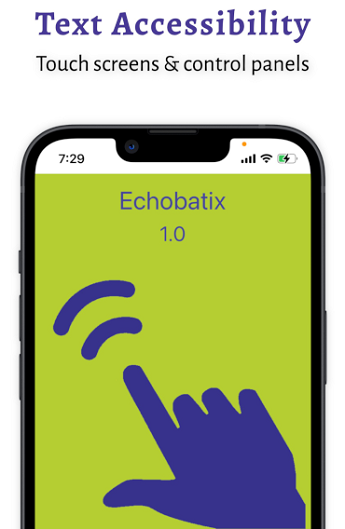 Echobatix is an incredible app which enables blind and visually impaired users to do 2 main things:
Echobatix is an incredible app which enables blind and visually impaired users to do 2 main things: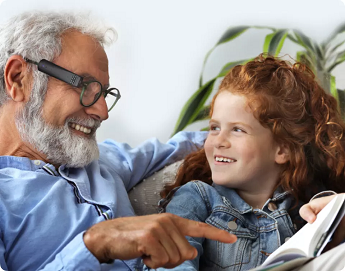 OrCam has two incredible accessibility products which allow blind and visually impaired people to read and see.
OrCam has two incredible accessibility products which allow blind and visually impaired people to read and see.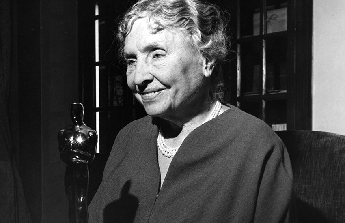 Helen Keller, the most famous and revered deafblind person in history, received an Academy Award for the 1955 documentary about her life called “Helen Keller in Her Story.”
Helen Keller, the most famous and revered deafblind person in history, received an Academy Award for the 1955 documentary about her life called “Helen Keller in Her Story.” Here are some of the most important statistics relating to blindness and visual impairment in the U.S., according to the CDC:
Here are some of the most important statistics relating to blindness and visual impairment in the U.S., according to the CDC:
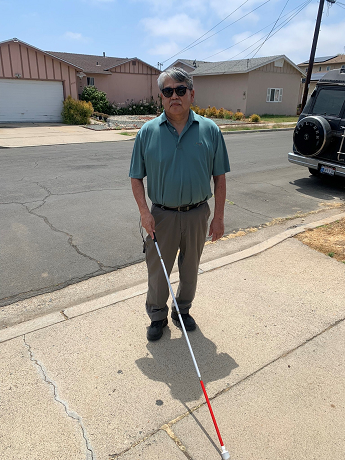 Join us in celebrating Kevin's incredible journey of resilience and personal growth! Kevin's story is an inspiration to us all, as he continues to overcome challenges and embrace new opportunities at San Diego Center for the Blind.
Join us in celebrating Kevin's incredible journey of resilience and personal growth! Kevin's story is an inspiration to us all, as he continues to overcome challenges and embrace new opportunities at San Diego Center for the Blind. Interestingly, animals become blind for reasons similar to those which cause humans to become blind. Also, humans fall near the middle of the visual spectrum of animals, meaning that about as many species see better than we do as see worse than we do.
Interestingly, animals become blind for reasons similar to those which cause humans to become blind. Also, humans fall near the middle of the visual spectrum of animals, meaning that about as many species see better than we do as see worse than we do.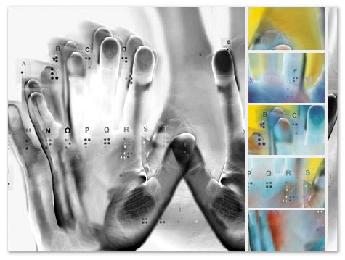 Here are ten great associations which provide help for blind and visually impaired people throughout the U.S.:
Here are ten great associations which provide help for blind and visually impaired people throughout the U.S.: Here are 8 of the best fiction and non-fiction books about blindness and visual impairment. Most are available as audiobooks.
Here are 8 of the best fiction and non-fiction books about blindness and visual impairment. Most are available as audiobooks.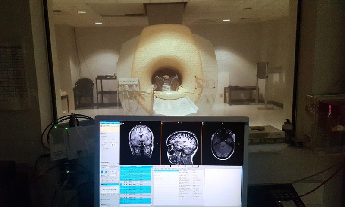 A study by Mass. Eye and Ear concludes that those who are blind at birth or before age 3 have new connections made in their brains which significantly enhance their other senses - hearing, touch, taste, and smell, as well as cognitive functions such as memory and language.
A study by Mass. Eye and Ear concludes that those who are blind at birth or before age 3 have new connections made in their brains which significantly enhance their other senses - hearing, touch, taste, and smell, as well as cognitive functions such as memory and language.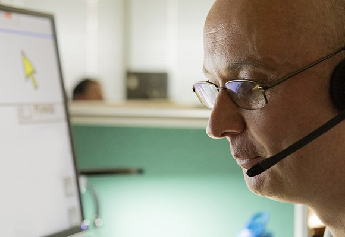 When someone is told, usually by a doctor, that they are losing their vision and perhaps may go blind, it is natural that a range of emotions follows. These emotions may pertain to the person themselves, their friends, family, and colleagues. They may relate to the practical aspects of how their life will change, including dependence upon others. Most importantly, these emotions can get to the heart of not just how the person thinks about their vision loss, but how they feel.
When someone is told, usually by a doctor, that they are losing their vision and perhaps may go blind, it is natural that a range of emotions follows. These emotions may pertain to the person themselves, their friends, family, and colleagues. They may relate to the practical aspects of how their life will change, including dependence upon others. Most importantly, these emotions can get to the heart of not just how the person thinks about their vision loss, but how they feel. The 2.2 billion visually impaired people in the world can benefit immeasurably from each of these five amazing technologies:
The 2.2 billion visually impaired people in the world can benefit immeasurably from each of these five amazing technologies:
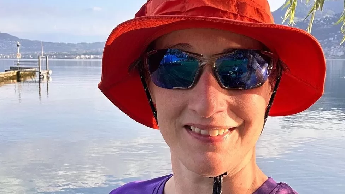 Melanie Barratt became the first blind person to swim across Lake Geneva, the largest lake in Switzerland. Together with her relay teammates, who alternated swimming one hour at a time, they traversed the 44 mile lake in 27 hours, 36 minutes and 19 seconds.
Melanie Barratt became the first blind person to swim across Lake Geneva, the largest lake in Switzerland. Together with her relay teammates, who alternated swimming one hour at a time, they traversed the 44 mile lake in 27 hours, 36 minutes and 19 seconds.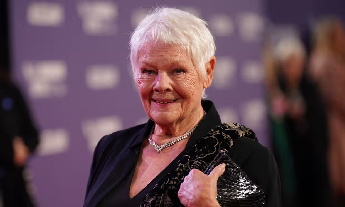 Oscar winning British actress Dame Judi Dench is no longer able to see on movie sets. At 88 years old, Dench has age-related macular degeneration. She also cannot read her scripts, instead relying on friends to help her read and rehearse. Fortunately she has a good memory.
Oscar winning British actress Dame Judi Dench is no longer able to see on movie sets. At 88 years old, Dench has age-related macular degeneration. She also cannot read her scripts, instead relying on friends to help her read and rehearse. Fortunately she has a good memory.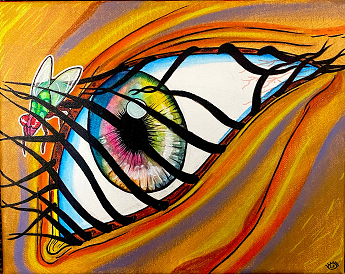 Condition: Glaucoma and cataracts which led to the loss of sight in her left eye.
Condition: Glaucoma and cataracts which led to the loss of sight in her left eye.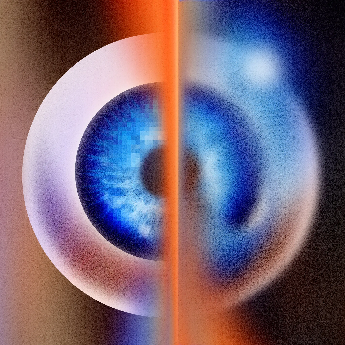 If you are blind or visually impaired, you are probably aware of at least some of the amazing apps and technology to help you "see" what's in your environment. Your phone has a magnifier to you can more easily read small font and see small objects. It also has text-to-speech and reverse capabilities.
If you are blind or visually impaired, you are probably aware of at least some of the amazing apps and technology to help you "see" what's in your environment. Your phone has a magnifier to you can more easily read small font and see small objects. It also has text-to-speech and reverse capabilities.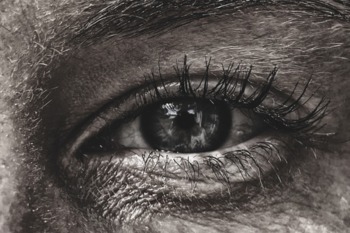 For those who have diabetes, it can be sight-threatening. Diabetic retinopathy is a significant complication resulting from diabetes, both Type I and Type II. It can cause vision loss and blindness. Estimates by the World Health Organization (WHO) show that of the 37 million cases of blindness globally, diabetic retinopathy is responsible for 4.8%.
For those who have diabetes, it can be sight-threatening. Diabetic retinopathy is a significant complication resulting from diabetes, both Type I and Type II. It can cause vision loss and blindness. Estimates by the World Health Organization (WHO) show that of the 37 million cases of blindness globally, diabetic retinopathy is responsible for 4.8%.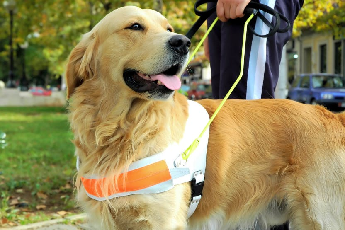 Guide dogs provide "eyes" for folks who are blind or visually impaired
Guide dogs provide "eyes" for folks who are blind or visually impaired Here are some hints on what to do and what not to do when you see a person with a guide dog or service dog:
Here are some hints on what to do and what not to do when you see a person with a guide dog or service dog:
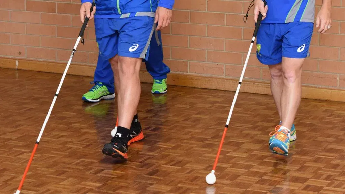 Tony Addison, who is blind, has experienced several instances of discrimination because of his blindness. Here are some notable examples:
Tony Addison, who is blind, has experienced several instances of discrimination because of his blindness. Here are some notable examples: If you've enjoyed Wimbledon the last two weeks, you might be wondering if there's a variation of tennis for blind or visually impaired folks. Actually, there is!
If you've enjoyed Wimbledon the last two weeks, you might be wondering if there's a variation of tennis for blind or visually impaired folks. Actually, there is!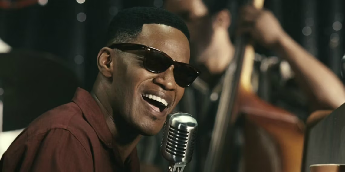 Here are 15 great movies that depict main characters who are blind or visually impaired - and are amazing to watch:
Here are 15 great movies that depict main characters who are blind or visually impaired - and are amazing to watch: If your vision isn't 20/20, or you are even visually impaired, it's natural to wonder if your vision will worsen. But can your vision actually improve, reversing vision loss? There actually are some types of vision loss that can improve naturally.
If your vision isn't 20/20, or you are even visually impaired, it's natural to wonder if your vision will worsen. But can your vision actually improve, reversing vision loss? There actually are some types of vision loss that can improve naturally.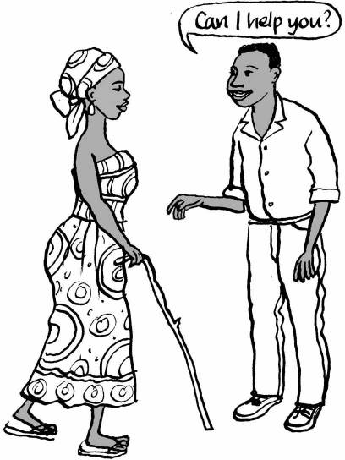 Here are some general guidelines on helping blind and visually impaired people :
Here are some general guidelines on helping blind and visually impaired people :
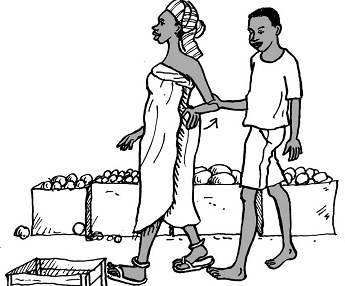 Here are some tips on helping blind and visually impaired people navigate narrow spaces or single file:
Here are some tips on helping blind and visually impaired people navigate narrow spaces or single file:
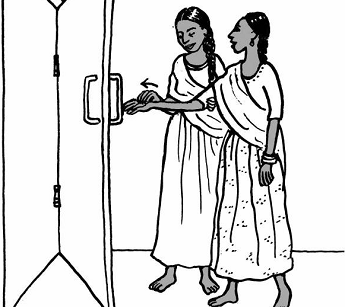 Here are some tips on helping blind and visually impaired people navigate doors:
Here are some tips on helping blind and visually impaired people navigate doors:
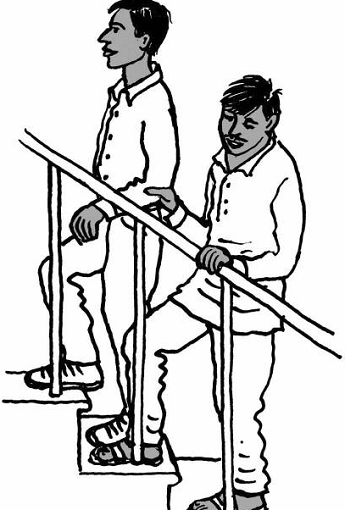 Here are some tips on helping blind and visually impaired people navigate steps:
Here are some tips on helping blind and visually impaired people navigate steps:
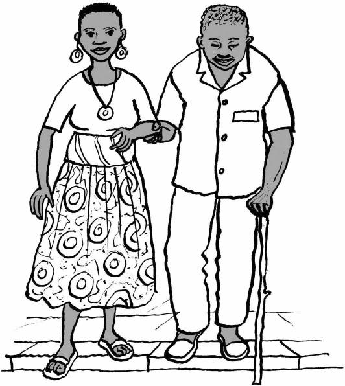 Here are some tips on helping blind and visually impaired people navigate curbs and roads:
Here are some tips on helping blind and visually impaired people navigate curbs and roads:
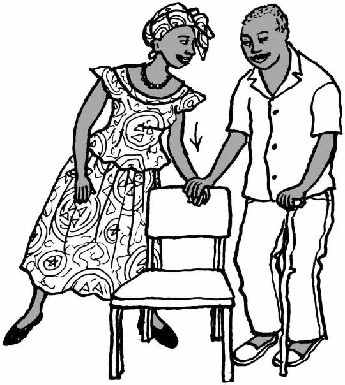 Here are some tips on helping blind and visually impaired people while finding a seat:
Here are some tips on helping blind and visually impaired people while finding a seat:
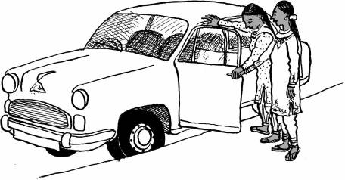 Here are some tips on helping blind and visually impaired people while travelling:
Here are some tips on helping blind and visually impaired people while travelling:
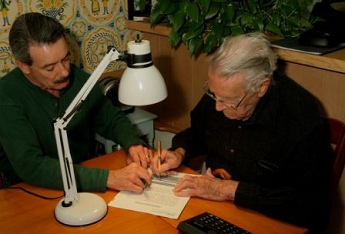 Here are some broad categories of products that can be useful for visually impaired seniors, and others. If you are looking for a gift for a visually impaired friend or loved one, this is a good place to start.
Here are some broad categories of products that can be useful for visually impaired seniors, and others. If you are looking for a gift for a visually impaired friend or loved one, this is a good place to start.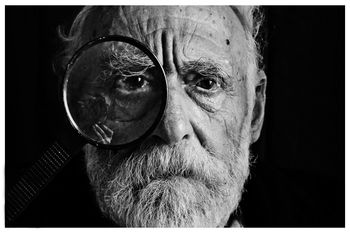 A study shows that a lack of vitamin D, an antioxidant, is associated with a significantly greater risk of cataract, which is the loss of transparency of the eye's lens. This is especially true in young adults. More than 1 billion people worldwide are estimated to have vitamin D deficiency, often to to lack of exposure to sunlight.
A study shows that a lack of vitamin D, an antioxidant, is associated with a significantly greater risk of cataract, which is the loss of transparency of the eye's lens. This is especially true in young adults. More than 1 billion people worldwide are estimated to have vitamin D deficiency, often to to lack of exposure to sunlight. If you are blind or visually impaired, here are 8 hints to make cooking enjoyable, safe, and yummy:
If you are blind or visually impaired, here are 8 hints to make cooking enjoyable, safe, and yummy: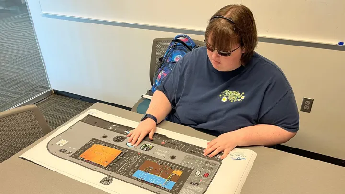 21-year-old Kaiya Armstrong dreams of being a pilot. To turn that dream into reality, she is adapting a plane so she can fly from Phoenix to Washington. These adaptations include:
21-year-old Kaiya Armstrong dreams of being a pilot. To turn that dream into reality, she is adapting a plane so she can fly from Phoenix to Washington. These adaptations include:
 The U.S. has over 100,000 ATMs that are accessible to the blind and visually impaired, plus many more internationally. This is required by law - the ADA to be specific. There are two primary ways to use the accessibility features of these ATMs:
The U.S. has over 100,000 ATMs that are accessible to the blind and visually impaired, plus many more internationally. This is required by law - the ADA to be specific. There are two primary ways to use the accessibility features of these ATMs: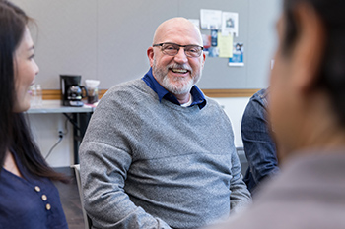 According to the CDC, 1 million Americans are blind and 7 million have vision loss. Additionally, 93 million are at risk of significant vision loss. Of course, blindness and vision loss affect ones sight, physical health, and quality of life. But they also can have a big impact on these mental health issues:
According to the CDC, 1 million Americans are blind and 7 million have vision loss. Additionally, 93 million are at risk of significant vision loss. Of course, blindness and vision loss affect ones sight, physical health, and quality of life. But they also can have a big impact on these mental health issues: Almost everyone loves to swim. But swimming as a blind or visually impaired person can carry an added measure of anxiety. How do I swim straight? How to I know when I'm reaching the end of the pool? How do I not drown?!
Almost everyone loves to swim. But swimming as a blind or visually impaired person can carry an added measure of anxiety. How do I swim straight? How to I know when I'm reaching the end of the pool? How do I not drown?! Last season, David Mermelstein was seated in the outfield bleachers. When the inning ended, Angels outfielder Juan Lagares threw the ball into the stands, intending it as a souvenir for a lucky fan. However, he threw the ball hard, and it hit Mermelstein in the eye socket while he was eating peanuts. As a result, he was blinded.
Last season, David Mermelstein was seated in the outfield bleachers. When the inning ended, Angels outfielder Juan Lagares threw the ball into the stands, intending it as a souvenir for a lucky fan. However, he threw the ball hard, and it hit Mermelstein in the eye socket while he was eating peanuts. As a result, he was blinded.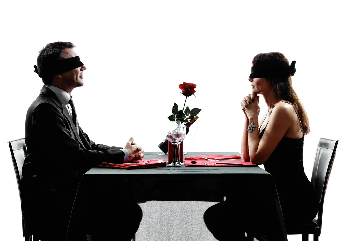 Here are 5 tips from the Cleveland Clinic that can help explain vision loss to a loved one:
Here are 5 tips from the Cleveland Clinic that can help explain vision loss to a loved one: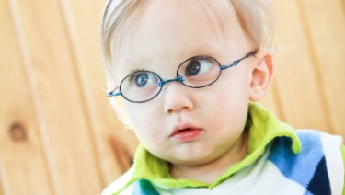 If you suspect your baby or toddler might have vision issues or even be blind, of course the most important thing to do is to get them an eye exam. Here are the most important early signs to look for which might indicate vision impairment or blindness:
If you suspect your baby or toddler might have vision issues or even be blind, of course the most important thing to do is to get them an eye exam. Here are the most important early signs to look for which might indicate vision impairment or blindness:

